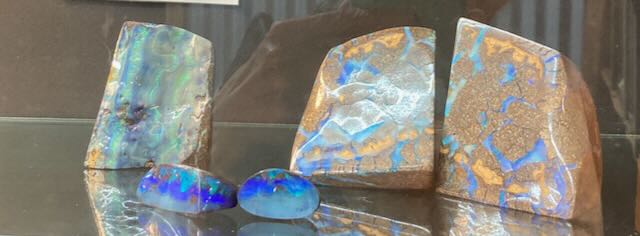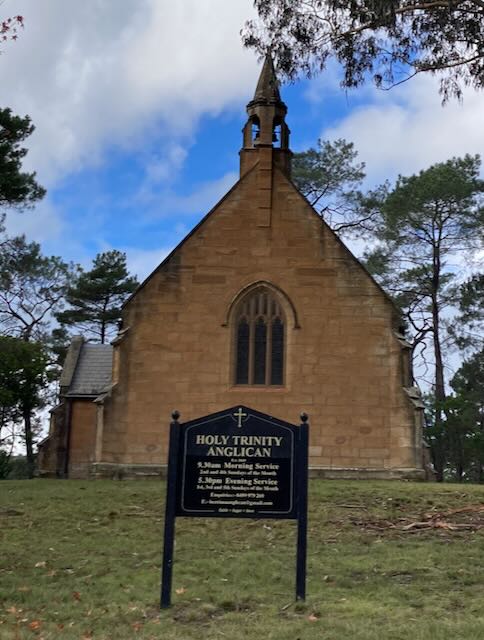By Brenda S. Cox
“In 1775, Cassandra Austen gave birth to her second daughter whom she named Jane. The same year Captain James Cook was made a Fellow of the Royal Society, in recognition of his achievements in reaching Botany Bay, claiming New South Wales for the British Government and landing on the islands of New Zealand. Cassandra and George Austen, gazing fondly at their new baby, could never have dreamed that one day their little girl’s name would be familiar and admired in those new British territories on the other side of the world.”—Jane Austen: Antipodean Views, by Susannah Fullerton and Anne Harbers Amazon UK link
Antipodean Views goes on to tell us that Jane Austen certainly knew about Australia. Her brother mentioned Botany Bay in one of his published articles, and her aunt almost got transported there when she was accused of theft. The Exeter Exchange in London had a kangaroo, which Jane’s sister Cassandra probably saw. Austen never mentions Australia in her novels, but many “down under” love Jane today.

When Susannah Fullerton, president of the Jane Austen Society of Australia, invited me to come speak to the JASA in Sydney, I thought, “It’s just too far!” From where I live in the eastern United States, it is quite a distance. Traveling from Atlanta to Sydney takes at least 20 hours, and can be more than 40 hours, depending on stops and layovers. The time change is 14 hours. (So noon on Monday in Atlanta is 2 AM on Tuesday in Sydney.) You cross the international dateline both going and coming back, so you lose a day going, and get it back when you return. So it’s a big commitment to go that far.
I met Susannah at the 2022 AGM in Victoria, Canada, where she gave a wonderful talk on “The Many Duels of Sense and Sensibility,” even after she had traveled halfway around the world. (My favorite part was her discussion of Elinor and Lucy’s verbal duels.) Susannah also leads literary tours, taking groups from Australia (and elsewhere) to England, Europe, and North America. So I thought if she could do all that travel and still talk coherently, I could attempt it as well. I decided to take this wonderful opportunity to see a new part of the world.
Jane Austen enthusiasts down under are part of a network of Janeites stretching around the world. The JASNA (US and Canada) website lists Jane Austen Societies in the U.K., Australia (including groups in Adelaide and Melbourne as well as the main JASA), Argentina, Austria, Brazil, Chile, the Czech Republic, Denmark, India, Italy, Japan, Mexico, the Netherlands, New Zealand, Pakistan, and Spain. That list touches on five of the seven continents. (Any Jane Austen societies in Africa or Antarctica? Or other countries not listed here? Tell us!)

Does a trip to the other side of the world sound impossible to you? The black swan, in ancient times, was a symbol of the impossible–until European explorers discovered them in Australia! The term black swan “subsequently metamorphosed to connote the idea that a perceived impossibility might later be disproved.” (Wikipedia) Photo © Brenda S. Cox, 2024
Travels in Australia: Melbourne
On my recent trip, I got to meet with delightful Jane Austen lovers in both Australia and New Zealand. It was complicated coordinating with all their schedules. But in the end I had opportunities to share my talk, “Why Mr Collins?: The Church and Clergy in Jane Austen’s Novels,” with enthusiastic groups in five cities.
My husband and I started in Melbourne, where Dr. Alida Sewell and her husband kindly hosted us in their home for a week, giving us a chance to start getting over jetlag. Alida edits the bimonthly Newsletter of the Jane Austen Society of Melbourne, which includes book reviews and Austen-related news from around the world. Alida and I got in contact when she reviewed my book, Fashionable Goodness: Christianity in Jane Austen’s England, back in February of 2023, and she also encouraged me to visit.
The Jane Austen Society of Melbourne was founded more than thirty years ago, in 1993. On the day I spoke to the Melbourne group, we had a lovely lunch with the committee members before I got to share with 25 or so participants about Mr. Collins. After a lively discussion, some members took home signed copies of my book.
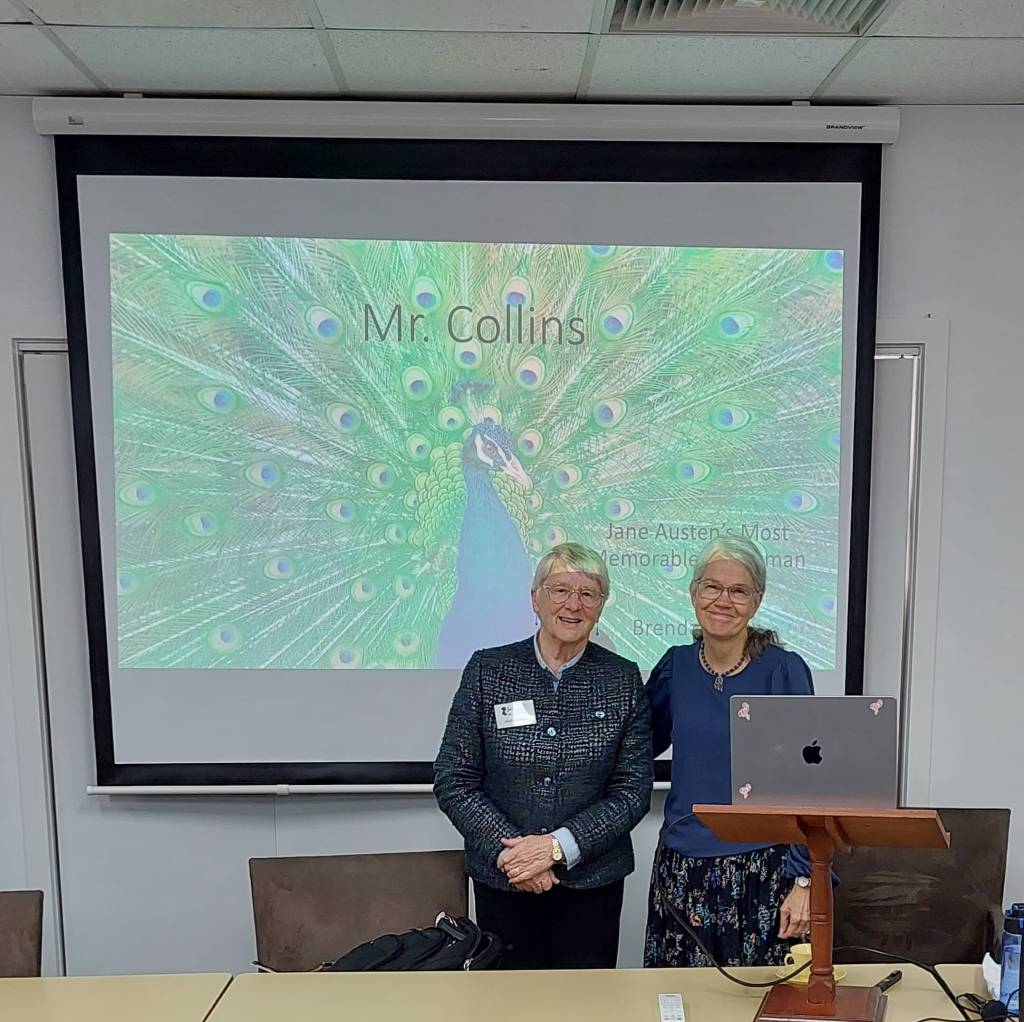
Photo © Brenda S. Cox, 2024
In every place we visited, my husband I went to see some of the unique wildlife of the country. Near Melbourne, we had the delightful experience of seeing hundreds of little penguins, blue and white penguins only 16 inches tall, waddling in from the sea in the evening. Alida also took us to the Moonlit Animal Sanctuary, where we could pet wallabies and kangaroos. We also met gorgeous Australian birds like the pink cockatoo, with its sunset colored crest , and the well-camouflaged tawny frogmouth.
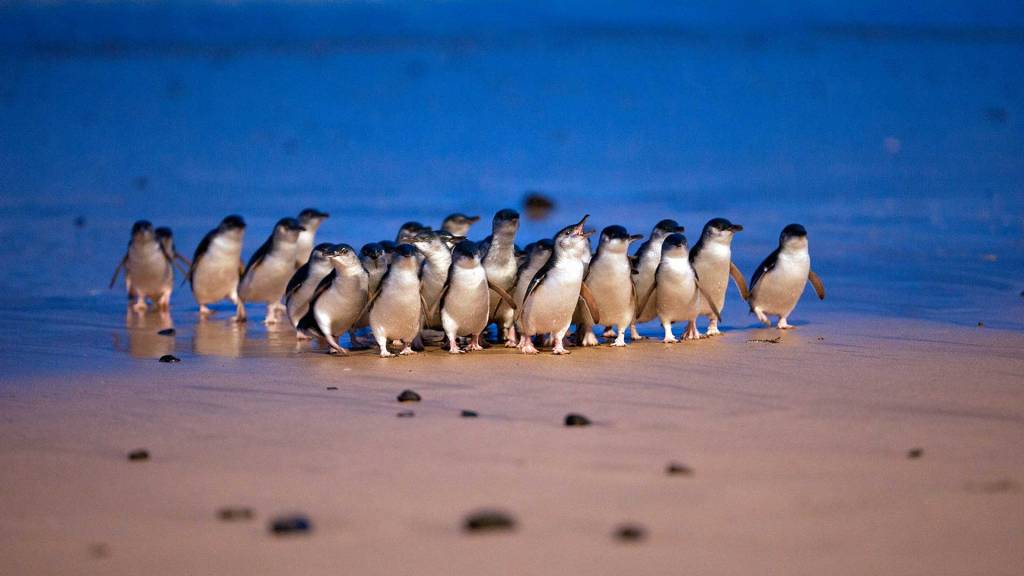
Travels in Australia: Brisbane
From Melbourne we headed to Brisbane, where Barbara O’Rourke, a member of the local Jane Austen Society committee, generously ferried us around. I got to pet a koala bear at the Lone Pine Koala Sanctuary. We also saw lovely opals, the national gemstone of Australia, at the Brisbane Opal Museum. Australia still produces 95% of the world’s precious opals.
I spoke to around 70 keen Janeites in Brisbane, and got to order extra books for them beyond the ones I had brought to sell (as I also did in Sydney and Wellington later on! I loved their enthusiasm). This is the twenty-second year of the Brisbane group, which has around a hundred members total. A committee of seven people lead them, each of those seven “doing what they do best,” so that all roles are covered.
At meetings the Brisbane branch of the Jane Austen Society of Australia offers a Regency Fair table. I saw a wide range of interesting-looking materials there. Members bring in Austen-related books and magazines they are finished reading. These are offered for sale at a low, nominal price, which goes to benefit the Society. Books may be donated back later, making it similar to a rotating library, but without anyone needing to keep track of loans and returns. Conversations often start up around the table, giving members opportunities to interact. I love this idea: recycling, networking, and giving everyone a chance to learn and enjoy more of Jane Austen!
The next week we visited friends on the “Sunshine Coast” north of Brisbane, enjoying more birds and wildlife, as well as a ginger factory where we learned about the production of ginger and honey.
Travels in Australia: Sydney and Southern Highlands
Finally we made it to Sydney, where the Taronga Zoo gave us a fantastic final look at Australia’s very special animals and birds, ranging from platypus and potoroo to giant emus and bright honeyeaters.

From Sydney, Susannah Fullerton took us out to the Southern Highlands, where we saw a bit of Australia’s frontier culture, then met with another keen group of about twenty Janeites for lunch and my talk.
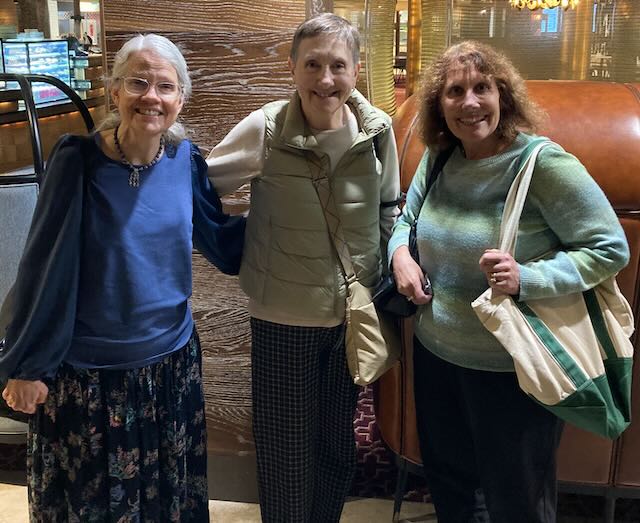
Jane Austen Society of Australia Day Conference on Jane Austen and the Church
That Saturday the JASA hosted an all-day conference on “Mr. Collins’ Profession: Jane Austen and the Church.” We began with my talk on Mr. Collins, which explores why Austen, a devout Anglican Christian, chose to portray Mr. Collins as she did, and what his life and challenges were as a clergyman at this time. Then we got to hear about other aspects of the church in Austen’s time, from excellent speakers.
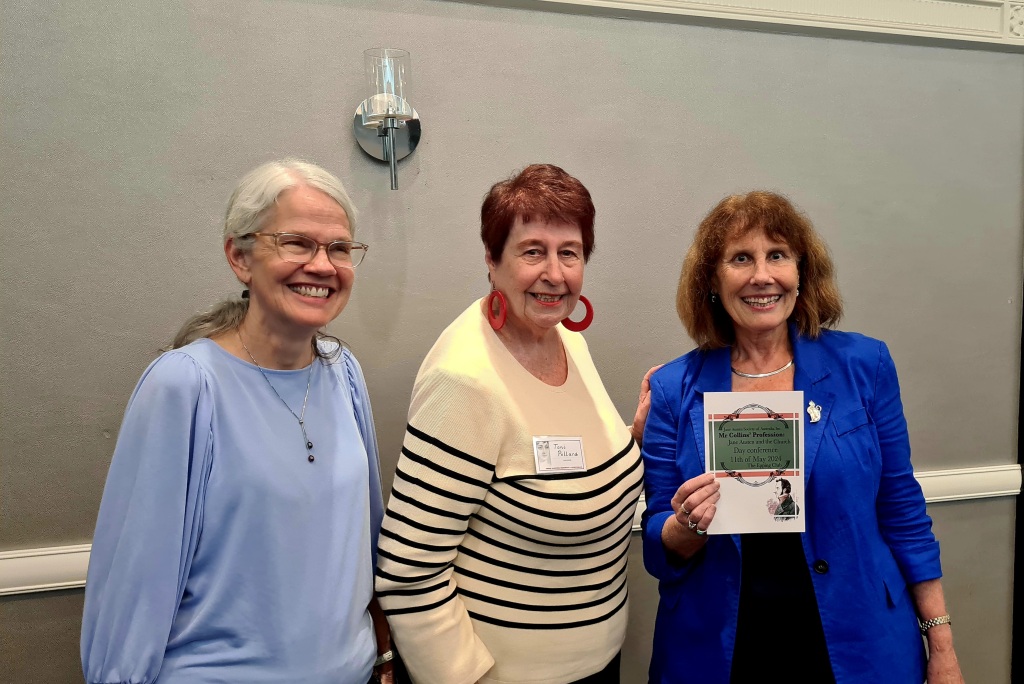
Anne Harbers, writer and art historian, showed us images of clergy from the time, and explained what those images show us. One that fascinated me was Rev. Humphry Gainsborough, the artist Gainsborough’s brother. He was the pastor of an Independent Chapel as well as an engineer and inventor. You may have one of his inventions on your front door—a lock with a chain, that allows the door to be partially opened. Rev. Gainsborough invented that type of lock for the gate of his parsonage in Henley, England.
Roslyn Russell then told us about sermons and devotional literature in Austen’s novels, contrasting her perspective with later authors Anthony Trollope and Barbara Pym. I especially enjoyed meeting Roslyn since I enjoyed her novel, Maria Returns: Barbados to Mansfield Park, which gives Maria Bertram her own happy ending.
We got even deeper with Scott Stephens’ fascinating talk, “‘How could you be so unfeeling?’: Moral Encounter and its Counterfeits in Jane Austen’s Later Fiction.” He talked about moral encounters, and where deep ones occur in Austen’s novels (for example, on the tops of hills, or in letters), and where shallow counterfeits occur (such as in Bath).
I had the privilege of finishing off a great day by giving a brief talk on “‘Her Parish and Her Poultry’: The Lives of Clergymen’s Wives in Austen’s World.” We explored the similarities and differences between the lives of clergymen’s wives and of gentry wives in the English countryside of Austen’s time.
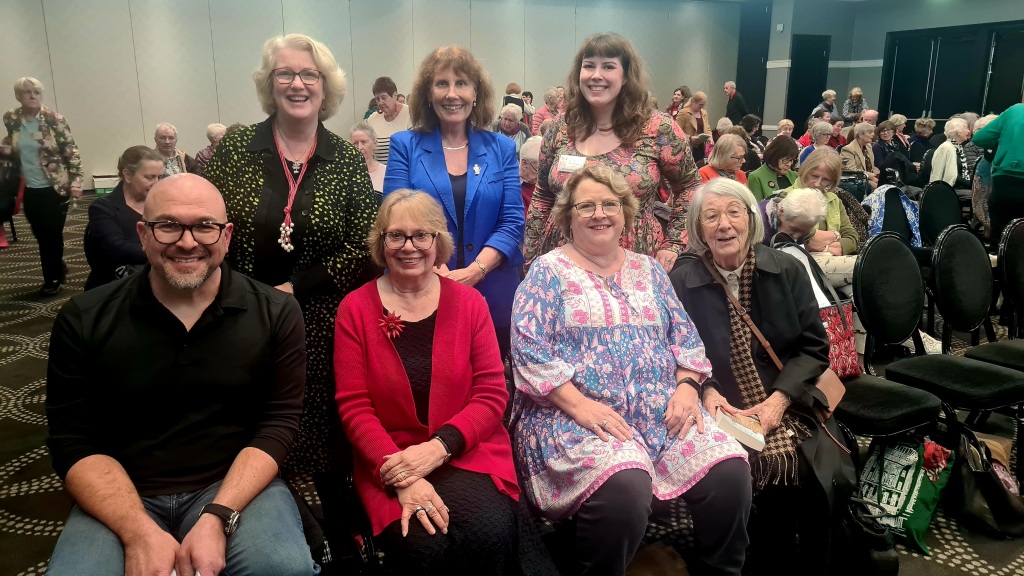
Front Row: Scott Stephens (ABC Australia Journalist and speaker), Dr Roslyn Russell (speaker), Cheryl Hill (JASA Membership Secretary & AV operator), Dr Ruth Wilson (JASA Patron and author of The Jane Austen Remedy).
Photo courtesy of JASA.
The Jane Austen Society of Australia, founded in 1989, has over 500 members. Its regular meetings (not AGMs) are the largest of any Jane Austen Society in the world, averaging around 130 people per meeting. Participants at the Day Conference came from Sydney (where the meeting was held), Melbourne, Canberra, Queensland, and all over New South Wales.
JASA publishes a yearly Chronicle of news and reports, twice-yearly newsheets called Practicalities, and a yearly journal of scholarly papers called Sensibilities. This year’s Sensibilities will include articles based on the talks at the Day Conference, among others. I look forward to reading them, since there’s so much more I could glean!
On Sunday we got to see a bit of Sydney, worshiping at lovely St. Andrew’s Anglican Cathedral, founded in 1819, soon after Austen’s death. Building on its long history, the church seems to be vibrant and lively today. Placards around the church gave summaries of the Christian message in many languages, for this multicultural city.
After lunch and birdwatching in the park, we visited the Hyde Park Barracks, which originally held transported convicts, then women immigrants. The museum gave us impressions of some of Australia’s tumultuous history, including the tragic impact on Aboriginal communities.
Travels in New Zealand: Wellington and Beyond
The next day we flew to New Zealand, which is not as close as one might imagine! We saw yellow-eyed penguins, a blue whale, and royal albatrosses in Dunedin, a city with a Scottish flavor on New Zealand’s South Island. On the North Island we visited hobbit homes in Hobbiton (definitely a highlight of the trip); saw amazing geothermal formations and baby kiwis in Rotorua, and toured a Maori village; and marveled at a cave full of glowworms in Waitomo.
Our Jane Austen encounter was in Wellington, New Zealand. We could see Wellington’s literary and cultural associations immediately. The airport has statues of Gandalf on an eagle, a dragon, and a Doctor Who police box! Frances Duncan, who founded and runs the Jane Austen Society of New Zealand, met us at the airport with Sian Farr, who kindly hosted us in her home and showed us some sights.
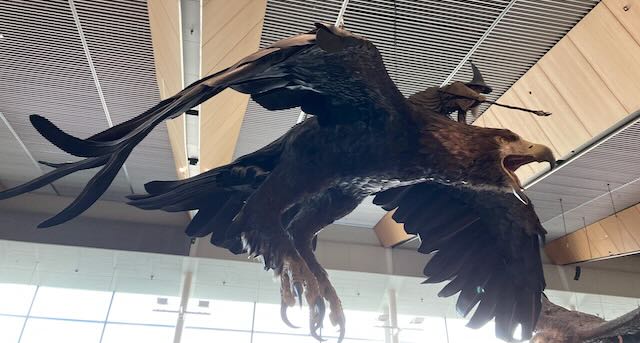
In Wellington, an eager group of Janeites met with me to discuss Mr. Collins, Jane Austen, and the church. We had a delicious tea, and afterwards they asked great questions. Frances Duncan started the Jane Austen Society of Aotearoa New Zealand just ten years ago, and it has been growing. About 25 people attended the meeting. I hope it spreads to many corners of the beautiful country of New Zealand, across the mountains and along the sea. Contact Frances through their website if you want to start up a Jane Austen group elsewhere in the country.
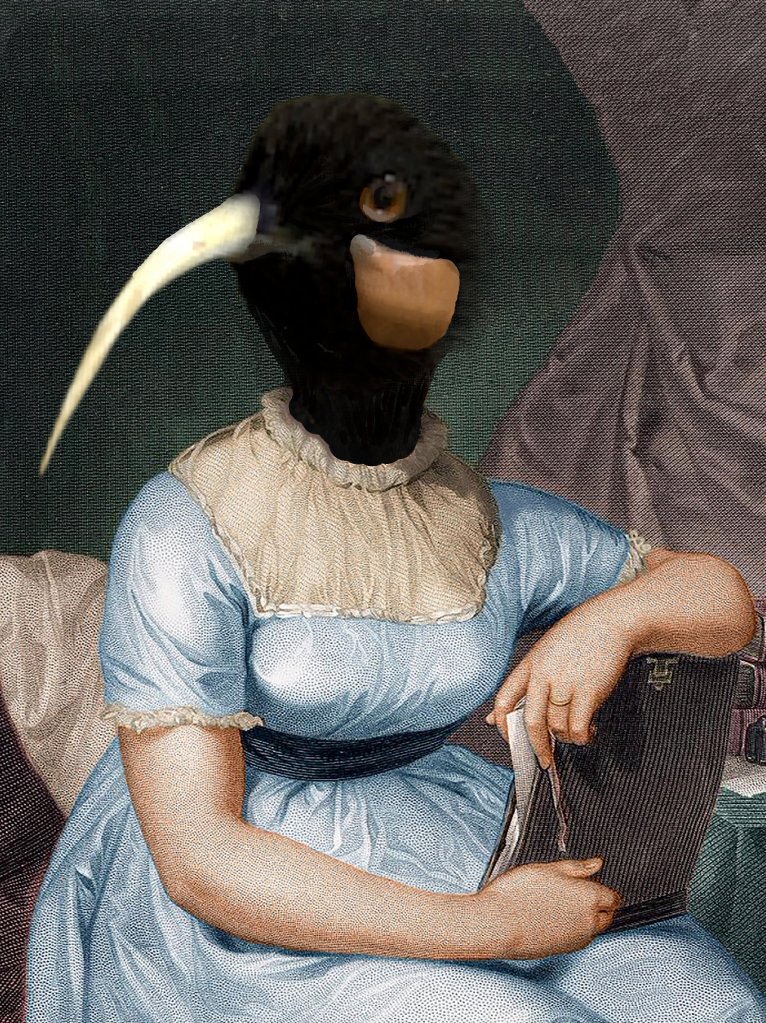
Photo courtesy of Frances Duncan
We enjoyed many of the fascinating birds of New Zealand. My favorite place in Wellington was Zealandia. This nature preserve in the city has specially designed fences to keep out the many non-native predators which have decimated the country’s unique native birds. Now kiwi and other birds are thriving in the preserve and surrounding areas.
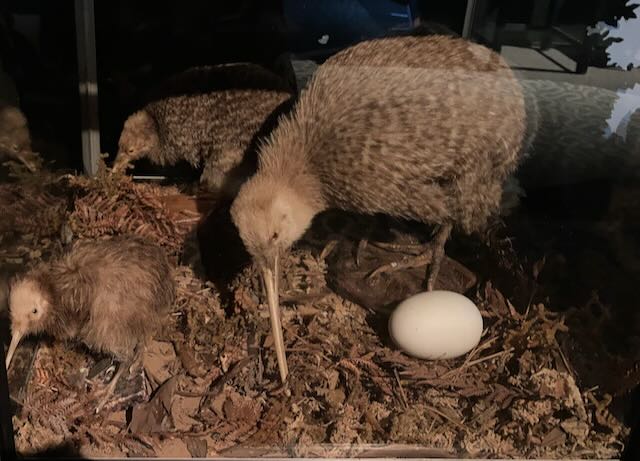
Photo © Brenda S. Cox, 2024
I was impressed by the extensive environmental efforts in both Australia and New Zealand, and the strides they are making toward preserving their incomparable native creatures.
What would Jane Austen have thought about bird and animal conservation, if she lived today? We don’t know, of course. But she does mention animals in her novels, and, as a country clergyman’s daughter, she essentially lived on a farm. Her brother James wrote a poem praising clergyman Gilbert White, who lived near Chawton. White is considered the father of modern ecology because of his book, The Natural History of Selborne.
So I’d like to think Jane Austen would have enjoyed a journey like ours, enjoying the natural world. And I hope our great discussions of her novels and the church in her world would have met her approval as well! I certainly loved meeting so many wonderful people who love Jane Austen as I do.
One highlight of our trip was visiting Hobbiton in New Zealand. For an account of that visit, and lots of great photos, see JRR Tolkien’s Hobbiton, in New Zealand.
Are you a Janeite living “down under”? Tell us where you live, and how you celebrate Jane Austen! And if you are looking for kindred spirits, contact the JASA to find other regional groups.
Brenda S. Cox is the author of Fashionable Goodness: Christianity in Jane Austen’s England. She also blogs at Faith, Science, Joy, and Jane Austen.
